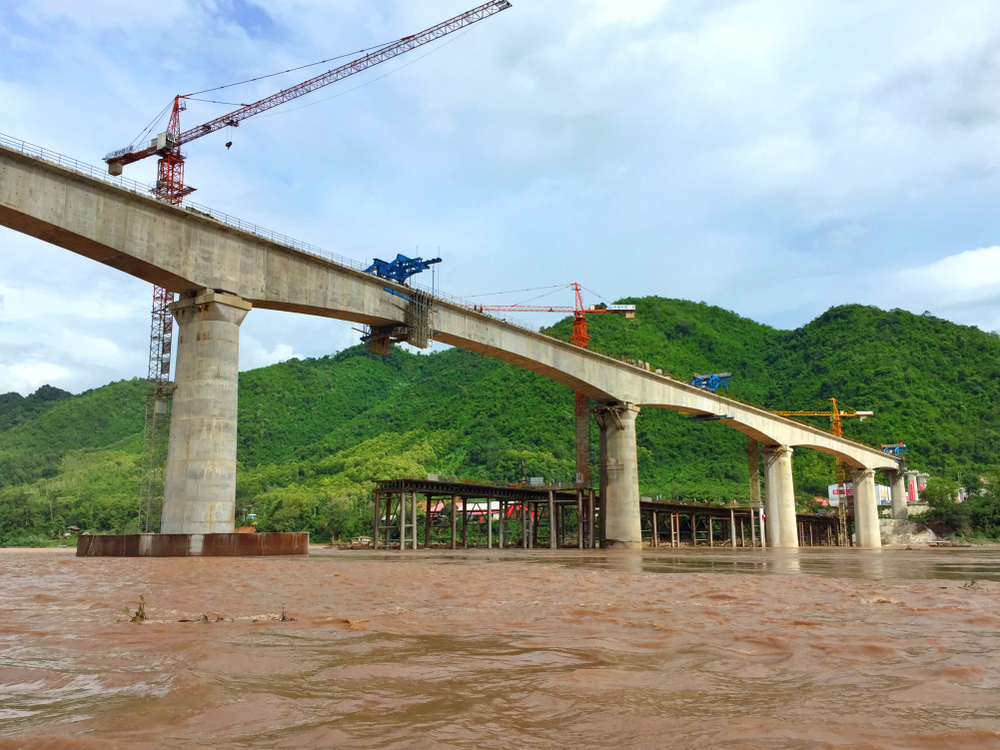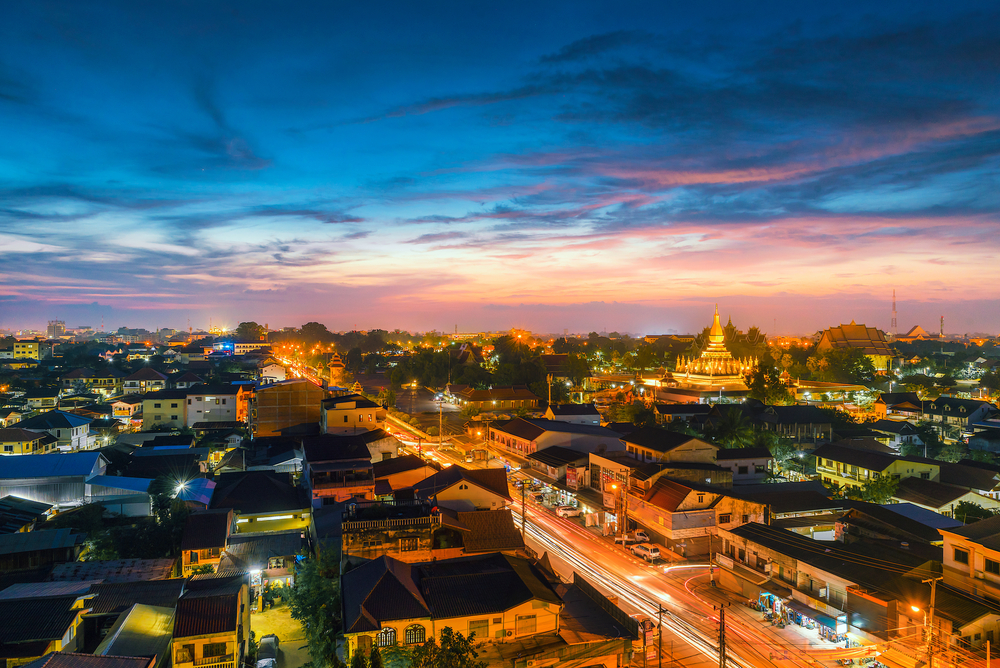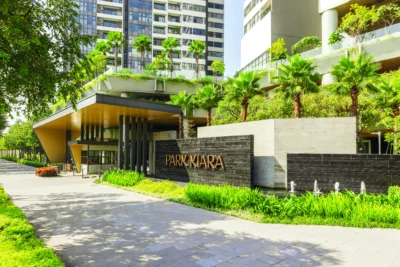Laos looks to China after being derailed
After a brief flurry, Vientiane’s rental market has sunk back into a familiar torpor. But the arrival of a long-anticipated rail link between the Lao capital and southern China may alter the dynamics of the sector

Coconut trees fringe a secluded five-bedroom villa on the outskirts of Vientiane, a kilometre from the gold stupa of That Luang. The price? A snip at USD1,200 per month, a 20 percent price drop compared to a year earlier when this two-level villa rented for USD1,500.
Vientiane has transformed into a buyer’s market almost overnight: landlords readily volunteering discounts and villas laying vacant across the tiny Southeast Asian capital. After years of steady price growth, Vientiane’s rental market has suddenly fallen off a cliff.
At the end of 2018, Hong Kong-based New Asia Property published a residential market update on Vientiane, noting prices had plunged as much as 30 percent in a year. Yet the property slump in Laos has largely gone unnoticed.
International real estate agents Colliers and Savills have released reports on Laos intermittently over the past decade, but in recent years have shifted their attention to more dynamic markets in the region, particularly Yangon.
Last year, the opening of Laos’ largest high-end residential property—the Landmark Diplomatic Residential Compound (DRC) overlooking the Mekong River—tipped Vientiane into massive oversupply, a sign of just how small the market remains, according to New Asia Property.
The grand opening of the Landmark DRC has sent the total number of apartments for lease in the capital soaring by almost 45 percent from over 500 units in early 2017 to a still small, but much expanded, 850-plus by the end of last year. In less than four years, Vientiane’s stock of apartments for lease has nearly tripled.
“That takes a lot of time to absorb in this sort of market, unless the market itself is booming,” says Tony Picon, managing director of New Asia Property.
In less than four years, Vientiane’s stock of apartments for lease has nearly tripled. But the problem for realtors and landlords in the Laos capital is quite simple: the market is not booming. In fact, it’s been quite the opposite
But the problem for realtors and landlords in the Laos capital is quite simple: the market is not booming. In fact, it’s been quite the opposite.
Last year, multinational mining firm MMG announced the sale of 90 percent of its interest in the Sepon Mine, the largest copper and gold deposit in Southeast Asia, to the smaller Chinese firm Chifeng Jilong Gold Mining for USD275 million as the deposit reaches the last chapter of its lifespan. Since 2003, when gold production started in Sepon, the mine has contributed—directly and indirectly—some 8.23 percent to Laos GDP, according to the Centre for International Economics based in Sydney and Canberra.
Since then, the mine’s slow demise has coincided with a scaling down of humanitarian programmes in Laos as the tiny country of less than seven million people graduates from Least Developed Country status by 2024.
GDP growth has similarly slowed, remaining at a robust 6.5 percent last year, but down for the sixth year in a row, according to World Bank data. These economic shifts have reduced numbers of the very type of person who can afford to pay USD1,200 per month for a villa in Vientiane near That Luang, or indeed USD2,200 per month for a top-range, 104-square-metre, two-bedroom condo in Landmark DRC.
“The western expat community has fallen dramatically,” says Stephen Aeschbach, founder and CEO of J&C Services, a Vientiane-based company that started out in real estate and later expanded into insurance, marketing, and expat services. “The big Australian mining companies are in the closing-down phase, and many other businesses have struggled because of the difficult economic conditions here,” adds Aeschbach.
Help looks to be on its way for Laos’ struggling real estate market, however. And, as with many markets in this region, economic impetus looks set to appear from a familiar source: China.
Scheduled to open at the end of 2021, a new railway line connecting Kunming in China with Vientiane all the way to Singapore is widely tipped to transform not only time and space in Laos—but also its stagnating economy.
Whereas road travel north from Vientiane to the tourist hotspot Vang Vieng currently takes four hours on a bumpy, unreliable road, trains on the new rail line will complete the journey in half the time, reaching Kunming in just 10 hours from the Laos capital. Construction of the railway has required an influx of more than 11,000 Chinese workers, according to the Vientiane Times, amid a 26 percent surge in Chinese tourists into Laos last year when arrivals reached 800,000 people mostly flying in from an expanding number of cities including Guangzhou, Kunming, and Changsha.
“The types of expats in Laos has changed dramatically,” points out Aeschbach of J&C Services. “Western foreigners have been replaced by those from Asia.”
More: Can Laos really afford its Belt and Road project?
The new railway and influx of Chinese looks set to transform Vientiane’s property market, a trend that’s already beginning. Yao Bin, a Chinese citizen who has lived in Laos since the 1990s, serves as the head of Kritaphong Group which built the Landmark DRC and a large adjacent hotel. Yao shares he built both properties in anticipation of the rapid growth in Chinese visitors, both long and short-term. “We were very excited when we heard that the two countries wanted to build a railway,” Yao told China’s state agency Xinhua in 2017, the year before opening the Landmark DRC.
Featuring a swimming pool and tennis court, as well as a dim sum restaurant in the adjoining hotel, the Landmark DRC has become the de facto place to stay for Chinese executives visiting Vientiane. “Most of our guests are Chinese, and some Koreans,” informs a guest relations manager at the Landmark DRC.
The Laos government has been careful to manage the side effects such a huge project could have on the small country’s economy. Laos real estate watchers said that the government has yet to publicly identify the site for the Vientiane terminal of the railway over property speculation concerns in the capital.
For the moment, Vientiane’s property market remains quiet as the foreign-invested economy shifts from a Western-led focus on mining and NGO to one dominated by China, says Picon of New Asia Property. “It could be a bit of a waiting game,” he surmises. “But once activity takes place [on the railway in Vientiane] we are going to see the next stage of growth.”
This article originally appeared in Issue No. 155 of PropertyGuru Property Report Magazine
Recommended
Park Kiara in Hanoi raises the bar for sustainable urban living
Park Kiara in Hanoi is a repudiation of low-density, car-dependent suburban sprawl
6 reasons Bekasi is rising as Greater Jakarta’s next hotspot
One of Greater Jakarta’s rising stars is prospering, thanks to ample recreation and a contingent of desirable housing projects
6 developments driving Asia’s green real estate shift
Developers are being incentivised to push a green agenda into daring new realms
The Philippines’ LIMA Estate drives sustainable industrial growth
LIMA Estate models a citywide vision that uplifts workers while appealing to climate-conscious employers







